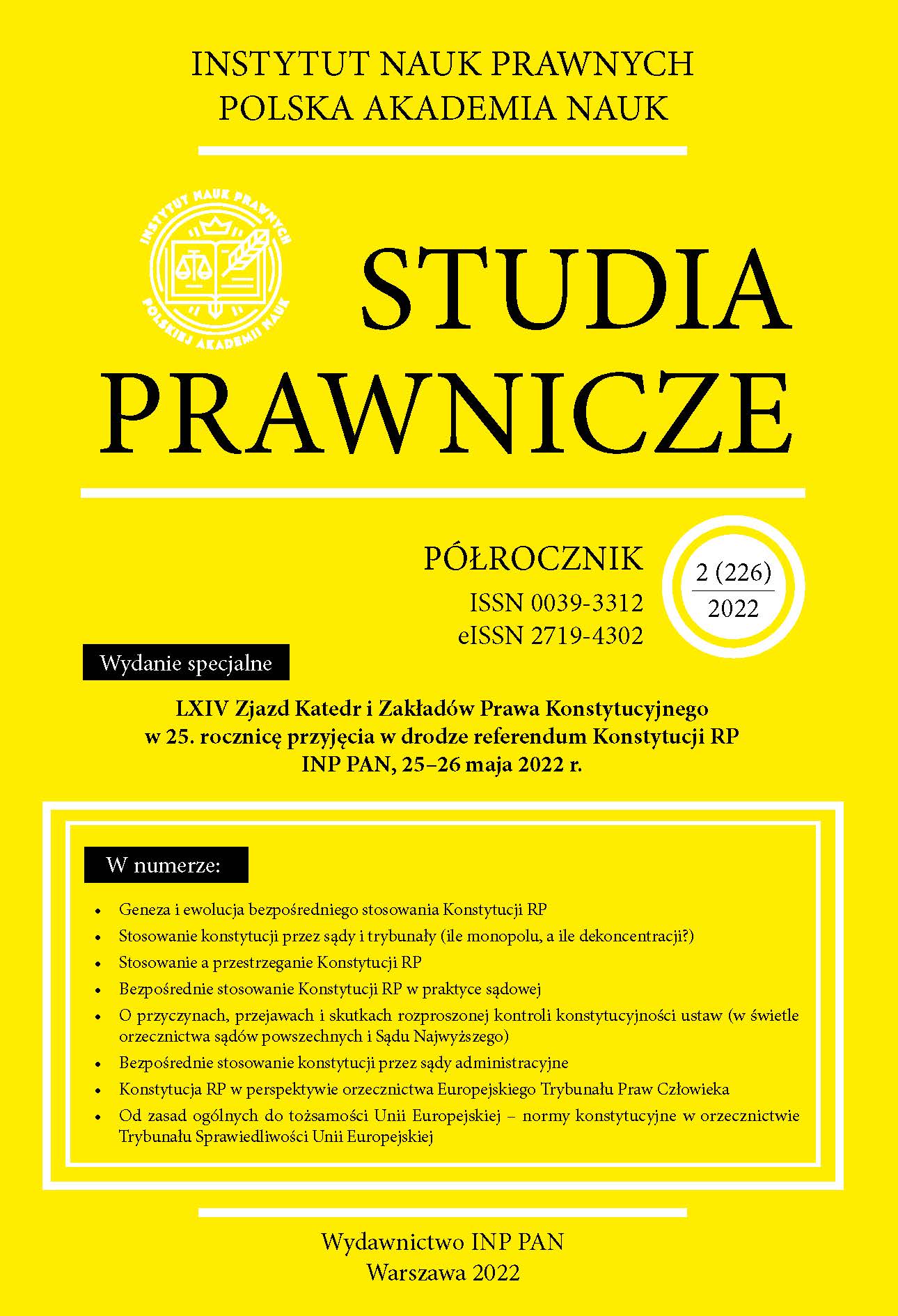Stosowanie konstytucji przez sądy i trybunały (ile monopolu, a ile dekoncentracji?)
Application of the Constitution by courts and tribunals (How much monopoly and how much diffusion?)
Author(s): Leszek GarlickiSubject(s): Constitutional Law, Sociology of Law
Published by: Instytut Nauk Prawnych PAN
Keywords: judicial application of constitutional norms; Poland; Constitutional Tribunal; Supreme Court; local courts; constitutional crisis; incidental (diffused) review of constitutionality;
Summary/Abstract: The article deals with the problem of the judicial application of the Constitution in the ongoing constitutional crisis in Poland. The starting point (part I) is to recall the principle of constitutionalism. This entails treating the Constitution as a legal instrument, which could (and should) serve as a norm of reference in specific cases or controversies decided by the courts. There are three basic forms of the judicial application: the autonomous application of constitutional norms, the co-application of constitutional and statutory norms and and – discused in this article - the judicial review of constitutionality of statutory norms.Part II of the article contains an analysis of the context in which constitutional review in Poland was introduced at the end of the last century. Following the example of continental Europe, it was decided to establish a separate constitutional court (the Kelsenian model). This was supported by traditional arguments concerning the role of statutes, the capacities of regular courts and the advantages of a ‘new’ constitutional court. The 1997 Constitution tended towards a monopoly of the Constitutional Tribunal in the review of the constitutionality of statutes. However, the regular courts (including the Supreme Court and the High Administrative Court) have never recognised this monopoly unconditionally.Today’s perspective (part III) is different. On the one hand, the constitutional crisis has led to the political absorption of the Constitutional Tribunal. It raises the more general question of what the necessary traits of a ‘constitutional court’ are. On the other hand, the regular courts have learnt to apply the Constitution (as well as other supra-statutory instruments, such as EU law and ECHR law) and are now capable of exercising an incidental review of statutes. This leads to the conclusion that, de lege lata, there are arguments supporting the autonomy of courts in exercising incidental review and that, de lege ferenda, it might be necessary to consider whether a separate constitutional court in Poland should continue to exist.
Journal: Studia Prawnicze
- Issue Year: 226/2022
- Issue No: 2
- Page Range: 31 - 57
- Page Count: 27
- Language: Polish

